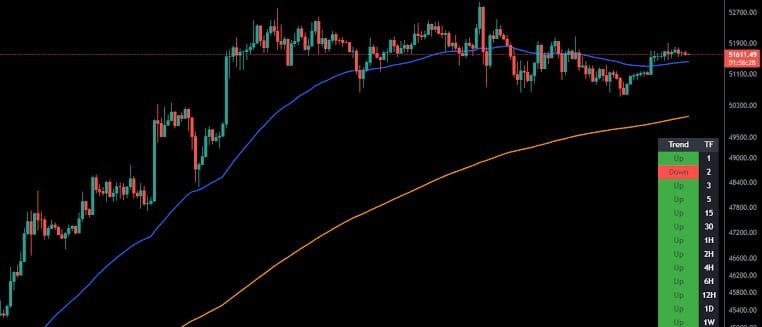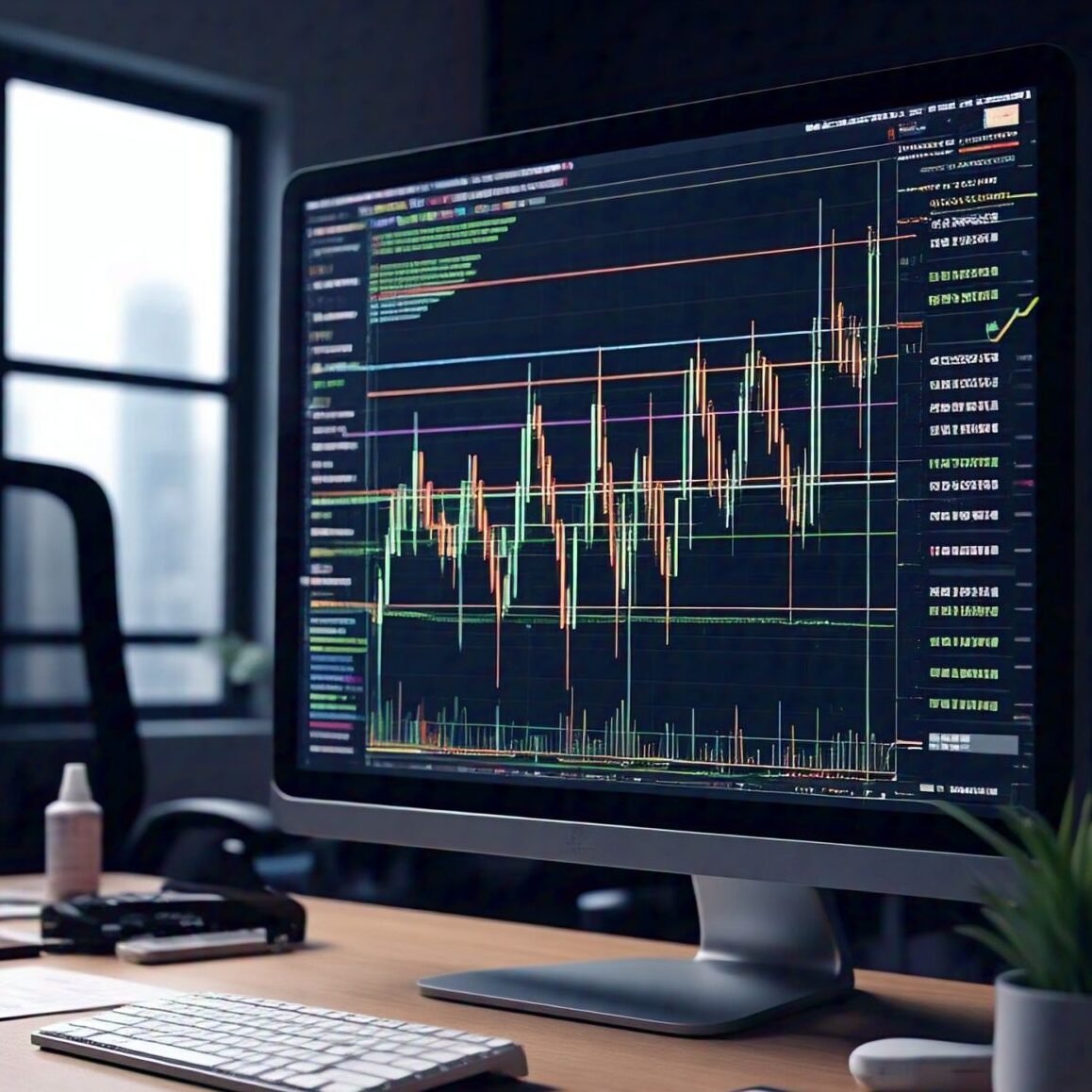Crypto Indicator Explanation:
In the last few seasons, trading cryptocurrencies has grown in attractiveness as more and more investors want to profit from the markets’ volatility. However, particularly among newbies knowing the intricate world of cryptocurrency trading may be confusing.
Technical indicators are one of the most important instruments used by cryptocurrency traders to make knowledgeable investing decisions. We will give an in-depth review of crypto indications in this post, including their definition, operation, and proper usage. and there are many types of top best crypto indicators.

What are Crypto Indicators:
Crypto indicators are computational algorithms that are derived from the price and/or volume data of cryptocurrencies. In the cryptocurrency markets, they are employed to spot trends, patterns, and possible trading opportunities. And must check Crypto Technical Analysis. Types Of Technical analysis 2025
Indicators can be categorized into several types, Including:
1) Trend indicators:
The first kind of technical analysis tool for identifying the strength and path of a market trend is a trend indicator. They help traders determine if a cryptocurrency is going higher, downward and or sideways. Typically used trend indicators consist of moving averages, the Relative Strength Index (RSI), and Bollinger Bands.. By creating buy and sell signals, these indicators assist traders in making educated putting effort decision. Traders may follow the trend and increase their earnings by employing trend indicators.

2) Momentum indicators:
Technical analysts employ momentum indicators to assess how strong or weak a stock’s price movement is. Momentum quantifies how quickly stock values rise or decrease. The moving average convergence divergence (MACD) and the relative strength index (RSI) are two popular momentum indicators.

3) Volatility indicators:
Technical analysis techniques called volatility indicators are used to figure out the significance of price swings in a financial market, like the cryptocurrency market. Someone can be used to find possible trading opportunities and assist traders in identifying the degree of risk and volatility connected to a specific asset.The foundation of volatility indicators is the notion that an asset’s price can change quickly and unexpectedly, and that these changes can be quantified and examined. In order to help traders make more informed judgements, they are frequently used to pinpoint times of high or low volatility.
4) Volume indicators:
Technical analysis techniques called volume indicators are used for assessing the current state of trading turnover in a financial market, like the cryptocurrency market. They can be used to find possible trading opportunities and assist traders to recognise a level of curiosity and involvement in a specific asset.
The premise around volume indicators is that the volume of trading activity may be used to determine the strength of a trend or the probability of a reversal. They are frequently employed to determine possible locations of support and resistance or to validate the validity of a trend.
How Do Crypto Indicators Work?
Crypto indicators find patterns and trends through analysing past price and/or volume data. To provide signals that can be utilised to guide trading decisions, they employ a variety of mathematical formulas and algorithms.
Multiple time periods, including one minute, one hour, four hours, or daily charts, can be used with indicators. This enables traders to assess various market circumstances and arrive at well-informed conclusions.

Types of Crypto Indicators :
There are numerous Top best crypto indicators available, each with its own strengths and weaknesses. Here are some of the most popular indicators:
1) Moving Averages (MA):
The popular cryptocurrency indicator that aids traders in seeing patterns and coming to wise judgements is the moving average (MA). It determines a cryptocurrency’s average price over a certain time frame, giving an indication of the direction of the market.Considering time series information, a moving average is frequently used to emphasise longer-term patterns or cycles and smooth out short-term volatility. The application will determine the threshold between short-term and long-term, and the moving average’s parameters will be adjusted appropriately. Examining macroeconomic time series like employment, GDP, and others is another use for it in economics. A moving average filters higher frequency components of non-time series data without having any particular relationship to time, but usually some sort of ordering is inferred. Simplified, it may be thought of as data smoothing.
2) Relative Strength Index (RSI):
The technical indicator employed in financial market analysis is the relative strength index (RSI). Based on the closing prices of a recent trading session, it is designed to depict the strength or weakness of a company or market both historically and currently. Relative strength is not the same as the indication.
The technical indicator used to perform financial market analysis is the relative strength index (RSI). Based on the closing prices of a recent trading session, it is designed to depict the strength or weakness of a company or market both historically and currently. Relative strength is not the same as the indication.
3) Bollinger Bands:
Bollinger Bands are a type of statistical chart that uses a formulaic method developed by John Bollinger in the 1980s to characterise the prices and volatility over time of a financial instrument or commodity. Financial traders use these charts as a methodical tool to control automated trading systems, inform trading decisions, or as part of technical analysis. Bollinger Bands display volatility (expressed by the width of the envelope) and a graphical band (the envelope maximum and minimum of moving averages, similar to Keltner or Donchian channels) in a single two-dimensional chart.
4) Stochastic Oscillator:
In Technical analysis, a stochastic oscillator is a momentum indicator that employs levels of support and resistance as an oscillator. This indicator was created by George Lane in the late 1950s.[1] The point of a current price with respect to its range across time is referred to as stochastic.[2] This technique compares a security’s closing price to its range in an effort to forecast price turning points.
5) MACD (Moving Average Convergence Divergence):
Gerald Appel developed the moving average convergence/divergence (MACD) trading indicator in the late 1970s for use in technical analysis of stock prices.[1] It is intended to highlight shifts in the velocity, strength, direction, and length of a stock price trend.
A set of three time series derived from past price data, usually the closing price, make up the MACD indicator[(sometimes known as the “oscillator”). The “signal” or “average” series, the MACD series proper, and the “divergence” series—the difference between the two—are these three series. The difference between the price series’ “fast” (short period) and “slow” (longer period) exponential moving averages (EMAs) is known as the MACD series. An EMA of the MACD series itself is the average series.
How to Use Crypto Indicators Effectively:
While crypto indicators can be powerful tools for traders, they should be used in conjunction with other forms of analysis, such as fundamental analysis and market news.
Here are some tips for using crypto indicators effectively:
1) Combine multiple Indicators:
Combining multiple indicators is an important strategy for traders. It improves trade confidence and lowers risk. By using multiple indicators, you can gain a deeper understanding of market trends. This approach provides for more accurate predictions and greater trading performance. Combining indicators is a powerful way to analyze the markets and make informed decisions
2) Adjust indicator settings:
Adjusting indicator settings is critical for achieving peak trading success. Each indicator has an individual set of settings that may be changed to fit different trading strategies. By modifying the settings, traders can fine-tune their indicators to better suit the market environment. This can help to eliminate false signals and increase the accuracy of trade predictions. Experimentation and practice are required when adjusting indicator settings to find the ideal combination for successful trading.
3) Monitor indicator divergences:
Monitoring indicator divergences is a key component of technical analysis. A divergence happens when the indicator and the price chart move in directions that are opposite. This could indicate a future trend reversal or continuance. Divergences can help traders find potential buy and sell signals. Identifying divergences helps traders stay ahead of the market and make smart choices while trading.
4) Use indicators in conjunction with chart patterns:
Using indicators in combination with chart patterns is an effective trading approach. Indicators help corroborate chart patterns such as trends and reversals, which increases trading confidence. Indicators can also be used to detect possible chart patterns before they emerge. By integrating indicators and chart patterns, traders may acquire a more comprehensive picture of market trends. This hybrid strategy can help traders generate better forecasts and enhance their overall trading success.
5) Backtest and refine your strategy:
Backtesting and improving your strategy is an important step towards creating a successful trading plan. Testing your plan on historical data allows you to assess its efficacy and discover areas for improvement. Backtesting reduces emotional biases and guarantees that your plan is based on objective analysis. Backtesting can help you improve your trading performance and decrease risk. Regular backtesting and refinement of your approach can help you remain adaptive and sensitive to shifting market conditions.
Conclusion:
Crypto indicators are strong tools that may aid traders in making sound investing decisions. Understanding how indicators function and how to utilise them effectively might give traders a competitive advantage in the crypto markets.
To gain the best results, combine numerous indicators, tweak indicator settings, observe divergences, employ indicators with chart patterns, and backtest your approach often.


1 thought on “Top Best Crypto Indicators Explanations 2025”